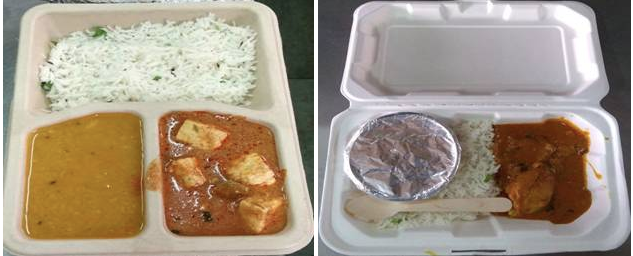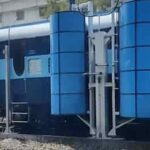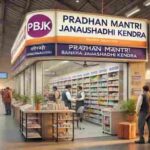IRCTC a PSU under Ministry of Railway, commenced its trial run of environmentally friendly bagasse-based food packaging (Eco-friendly ,biodegradability, versatility, cost-effectiveness and sustainable alternative to traditional packaging materials) on 8 select Shatabdis and Rajdhanis departing from New Delhi as World Environment Day 2018 celebrations got underway in India. As part of the Railways’ effort to go green, meals will be given to passengers aboard these trains using compostable plates rather than polymer plates.
With this new effort, IRCTC underlines its dedication to a cleaner, greener India and has made a small step in that regard.
Disposable utensils and serving dishes are made from bagasse, the fibrous residue that remains after sugarcane juice is extracted. To maintain environmental sustainability, plans will be developed to collect spent packaging, which will subsequently be processed for disposal through composting.
In the next months, the goal is to gradually replace the non-biodegradable packaging now used on all Rajdhani, Shatabdi, and Duranto trains run by the IRCTC with bagasse-based packaging.
But the question here is why Bagasse based packaging , to understand the reason read the full article:👇👇👇
In today’s environmentally conscious world, businesses and consumers alike are seeking sustainable alternatives to reduce their carbon footprint. One area that has gained significant attention is food packaging. Traditional packaging materials like plastic have adverse effects on the environment and pose serious disposal challenges. Enter Bagasse-Based Food Packaging, a promising eco-friendly solution that offers numerous benefits. In this comprehensive blog, we will delve into the concept of Bagasse-Based Food Packaging, exploring its features, advantages, and frequently asked questions. Let’s discover why it is becoming the preferred choice for sustainable food packaging.
Bagasse-Based Food Packaging
1. What is Bagasse-Based Food Packaging?
Bagasse is the fibrous residue left after extracting juice from sugarcane. It is a renewable resource abundantly available in sugar-producing regions. Bagasse-Based Food Packaging harnesses this byproduct to create biodegradable and compostable containers and tableware.
Production Process: The production involves collecting bagasse, pulping it, and then shaping it into various forms using high-pressure molds. The result is sturdy and functional packaging items ready to be used in the food industry.
2. Advantages of Bagasse-Based Food Packaging
- Environmental Benefits:Bagasse-Based Food Packaging significantly reduces the demand for traditional non-biodegradable materials, leading to a positive impact on the environment by reducing Carbon Footprint.
- Biodegradability and Compostability: Unlike plastic, bagasse products naturally decompose, enriching the soil and reducing waste in landfills.
- Heat and Leak Resistance:Bagasse packaging exhibits excellent resistance to hot and cold temperatures, making it ideal for both hot and cold food items.
- Customisation and Versatility: Bagasse containers and tableware can be easily molded into various shapes and sizes to accommodate different food types.
- Cost-Effectiveness: As bagasse is a byproduct of the sugarcane industry, utilising it for packaging reduces production costs, making it an affordable option.
4. Bagasse-Based Packaging vs. Traditional
- Comparison with Plastic: Bagasse packaging is compostable and does not release harmful toxins like plastic when decomposing.
- Comparison with Paper:Bagasse-based products have higher strength and resistance to moisture compared to traditional paper products.
- Sustainability Factors:Bagasse-Based Food Packaging conserves natural resources and reduces carbon emissions, making it a greener choice.
3. Applications of Bagasse-Based Food Packaging
- Food Industry:Bagasse containers are widely used in restaurants, cafes, and catering services to package meals for takeout and delivery.
- Takeout Containers: Bagasse clamshell containers are a popular choice for takeaway food due to their durability and leak resistance.
- Tableware and Cutlery: Bagasse plates, bowls, and cutlery offer a sustainable alternative to single-use plastic items.
- Agricultural Use: Bagasse finds applications in agricultural practices, such as seedling trays, as it is biodegradable and helps in easy transplantation.
5. The Future of Bagasse-Based Food Packaging
- Growth Potential: With increasing environmental awareness, the demand for sustainable food packaging is on the rise, positioning bagasse-based options for growth.
- Innovations and Research:Ongoing research and technological advancements are constantly improving bagasse-based packaging, making it even more versatile and efficient.
FAQs (Frequently Asked Questions)
1. Is Bagasse-Based Food Packaging Microwavable?
Yes, bagasse-based containers are microwave-safe, making them convenient for reheating food.
2. How Long Does Bagasse Take to Decompose?
Bagasse products generally decompose within 60 days under the right composting conditions.
3. Can Bagasse-Based Tableware Be Used for Hot Food?
Absolutely! Bagasse products have excellent heat resistance, making them suitable for hot food items.
5. Can Bagasse Packaging Be Customized with Logos?
Yes, bagasse containers and tableware can be easily customized with brand logos and designs.
6. Are Bagasse Products Water-Resistant?
While bagasse products are resistant to liquids to a certain extent, prolonged exposure to moisture may affect their integrity.














